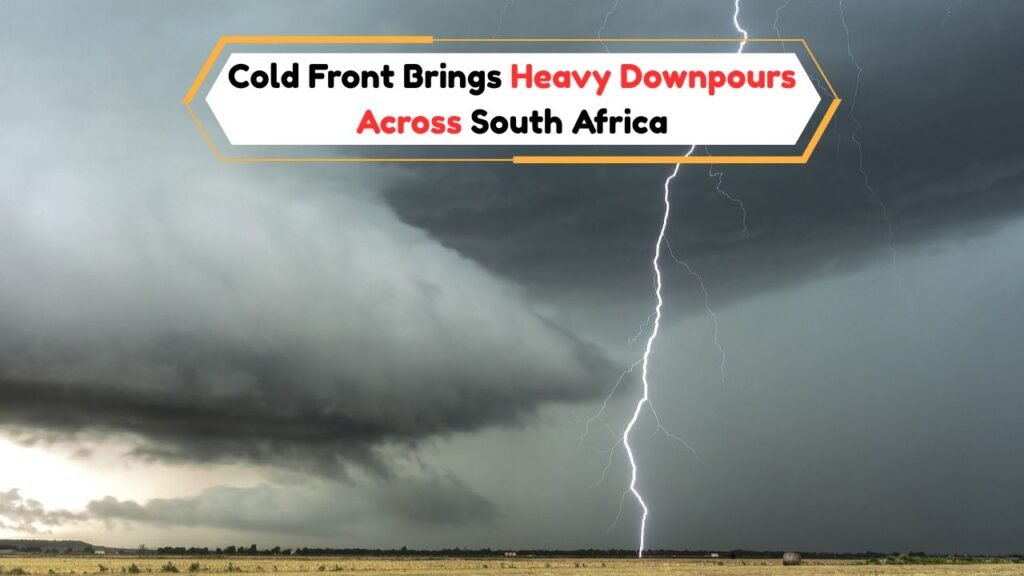Heavy Rain and Cold Front in South Africa: South Africans are gearing up for a dramatic shift in weather as meteorologists issue warnings of a substantial cold front paired with heavy rainfall this weekend. This adverse weather pattern is expected to affect various regions, bringing not only chilling temperatures but also potential disruptions. The South African Weather Service has highlighted that these conditions could lead to localized flooding, especially in vulnerable areas. Residents are advised to prepare accordingly, ensuring their safety and minimizing the impact on daily activities.

Understanding South Africa’s Cold Front and Rainfall Patterns
South Africa, known for its diverse climates, often experiences significant weather changes due to its geographical location. The upcoming cold front is anticipated to sweep across the country from the southwest, moving towards the northeast. This weather system will bring a stark drop in temperatures, with some areas experiencing an almost winter-like chill despite the calendar indicating otherwise. The heavy rain accompanying this cold front is primarily due to moist air being forced upwards over the mountains, resulting in excessive precipitation. Regions like the Western Cape, which are no strangers to such cold fronts, must brace themselves for high winds and stormy weather. It’s vital for residents, particularly those in flood-prone areas, to stay informed about weather updates and take necessary precautions to protect themselves and their properties.
Impact of the Cold Front and Heavy Rain on Daily Life
The anticipated weather changes are likely to pose challenges to various facets of daily life in South Africa. Transportation systems, especially in urban areas, might face disruptions due to waterlogged roads and reduced visibility. Commuters are advised to plan their journeys with extra caution, allowing for potential delays. Agricultural activities could also be affected, as the excessive rainfall might impact crops and livestock. Farmers should take preventive measures to safeguard their produce and animals. Moreover, the energy sector might experience increased demand as households turn to heating solutions to combat the cold. With these potential impacts, it’s crucial for communities to come together, supporting one another to mitigate the adverse effects of the weather conditions.
 Want to Claim R12,500 Cash for Youth? Ensure You're Eligible Before Applications Open on August 20!
Want to Claim R12,500 Cash for Youth? Ensure You're Eligible Before Applications Open on August 20!
Safety Precautions During Heavy Rain and Cold Front
As the cold front and heavy rain approach, the safety of individuals and communities should be a top priority. Residents are encouraged to secure loose outdoor items that might be blown away by strong winds. It’s also advisable to ensure that drainage systems remain unblocked to prevent flooding. In areas prone to power outages, having backup lighting and heating options can be invaluable. For those needing to travel, checking weather conditions beforehand and avoiding unnecessary trips can help reduce the risk of accidents. Communities should stay connected, sharing weather updates and offering assistance to vulnerable individuals. By taking these precautions, the impact of severe weather can be significantly lessened, ensuring everyone’s safety and well-being.
Weather Preparedness: Community and Government Efforts
Both the government and local communities have a role to play in preparing for and responding to the severe weather forecasted for South Africa. Authorities are urged to ensure that emergency services are on high alert, ready to respond to any incidents that may arise. Public awareness campaigns can help educate residents about the potential risks and necessary safety measures. Additionally, local governments should coordinate with meteorological departments to provide timely updates and warnings. Community organizations can assist by organizing support networks to check on those who might need extra help, such as the elderly or those with mobility issues. By working together, South Africa can weather the storm, minimizing the impact on its people and infrastructure.


